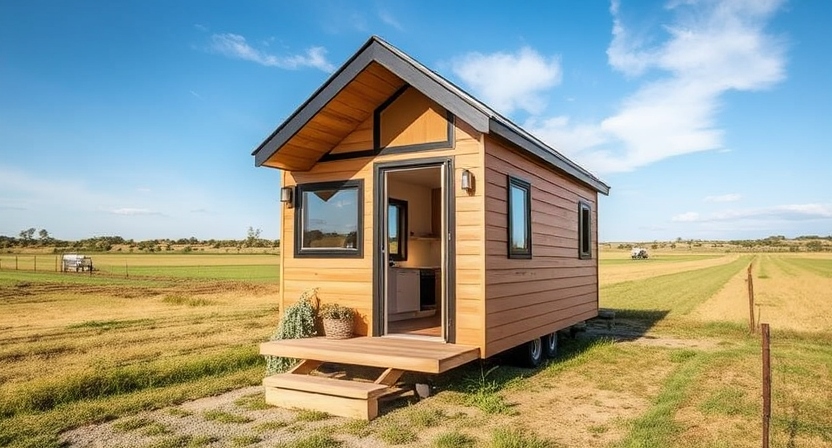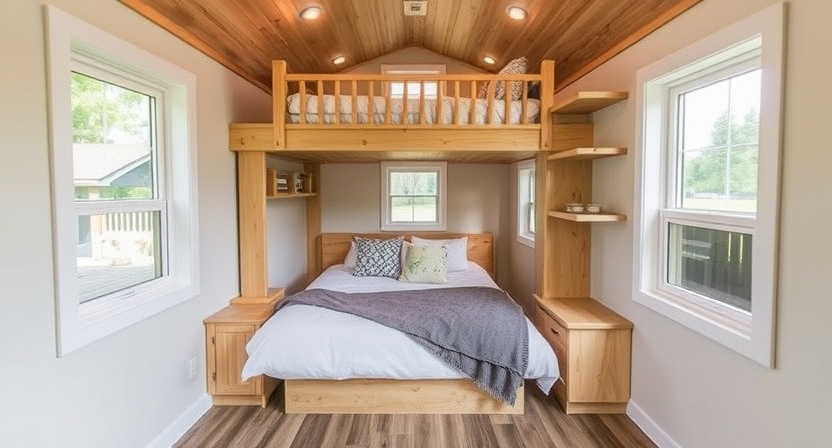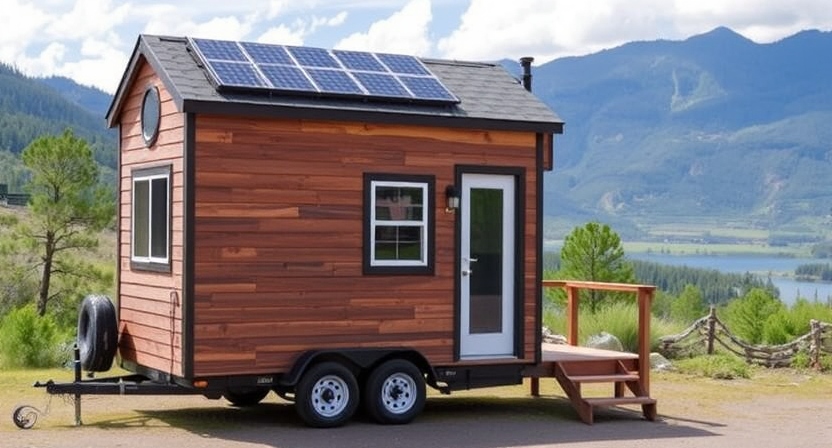1-Bed Tiny House Living: Your Dream Home in a Compact Package Tiny houses have become a popular choice for those looking to downsize, live sustainably, or embark on a minimalist lifestyle. Among the various types of tiny homes, a 1-bed tiny house is an excellent option for solo dwellers or couples seeking to embrace simple living. This guide will explore the design, benefits, cost, and lifestyle considerations for living in a 1-bed tiny house.
What is a 1-Bed Tiny House?
A 1-bed tiny house is a compact, movable home designed for one or two people. Typically, it ranges between 100 to 400 square feet and is equipped with essential amenities like a bathroom, kitchen, and living area. These homes can be mounted on wheels for mobility or placed on a foundation. They offer an affordable and sustainable alternative to traditional housing.
Benefits of a 1-Bed Tiny House

- Cost-Effective Living: A 1-bed tiny house allows you to save money on housing costs. From purchasing the house itself to maintaining it, tiny homes require fewer resources, leading to lower overall expenses.
Eco-Friendly and Sustainable: Tiny houses have a smaller environmental footprint, using fewer materials in construction and reducing energy consumption. Many tiny home owners utilize renewable energy sources like solar panels and composting toilets.
Freedom and Mobility: If your tiny house is built on wheels, you have the flexibility to move your home to different locations. Whether you want to live near the beach, in the mountains, or in a quiet suburban neighborhood, a movable tiny house offers unparalleled mobility.
Simplified Lifestyle: Living in a tiny house means downsizing your possessions and focusing on what truly matters. The smaller space encourages minimalism, reducing distractions and promoting a more intentional, fulfilling life.
ALSO READ : 6 Most Popular Types of Tiny Houses
Design Considerations for a 1-Bed Tiny House

- Space Optimization: With limited square footage, clever design and space optimization are key. Multi-functional furniture, built-in storage solutions, and open layouts can help make the most of every inch.
- Maximizing Natural Light: Natural light can make a small space feel larger and more open. Large windows, skylights, and light-colored interiors are great ways to let the sunlight in and create a warm, welcoming atmosphere.
- Efficient Kitchen and Bathroom: A small kitchen and bathroom should be fully functional while still conserving space. Compact appliances, smart storage solutions, and water-efficient fixtures will make life easier in your 1-bed tiny house.
Living in a 1-Bed Tiny House: What You Need to Know

- Location and Zoning: Before purchasing or building a 1-bed tiny house, it’s crucial to research local zoning laws and regulations. Some areas have specific rules about where tiny homes can be placed, and not all locations allow movable tiny houses.
- Utility and Off-Grid Living: If you plan on living off the grid, a 1-bed tiny house can be equipped with solar panels, composting toilets, and rainwater collection systems. These features provide independence from traditional utilities.
- Maintenance and Upkeep: Tiny houses are generally easier to maintain than traditional homes, but they still require regular upkeep. Routine tasks like cleaning, servicing the plumbing, and maintaining the exterior are necessary to keep the house in good condition.
Costs of a 1-Bed Tiny House
The cost of a 1-bed tiny house varies based on factors such as size, location, design, and materials. On average, a basic 1-bed tiny house can cost between $30,000 and $60,000, while a more luxurious, custom-built version can range from $60,000 to $120,000. Additionally, costs for land, utilities, and moving (if applicable) should be factored in.
Conclusion A 1-bed tiny house
is a wonderful option for those looking to embrace a simpler, more sustainable lifestyle. Whether you’re downsizing, living solo, or just looking for an affordable housing solution, these homes offer flexibility, eco-friendliness, and comfort. With proper planning and design, a 1-bed tiny house can provide everything you need in a compact, stylish package.
FAQs about 1-Bedroom Tiny Houses
1. How much does it cost to build a 1-bedroom tiny house?
The cost of building a 1-bedroom tiny house can vary widely based on materials, location, and whether you choose a DIY approach or hire professionals. On average, you can expect to spend between $20,000 and $50,000 for a basic build.
2. How long does it take to build a 1-bedroom tiny house?
A 1-bedroom tiny house can take anywhere from a few months to a year to build, depending on the complexity of the design and whether you’re building it yourself or hiring contractors.
3. Are movable tiny houses more expensive than stationary ones?
Movable tiny houses often cost more due to the need for a trailer and additional structural considerations. However, they offer flexibility and mobility, which can justify the higher cost.
4. How do you handle plumbing and sewage in a tiny house?
Tiny houses typically use either traditional plumbing systems or eco-friendly options like composting toilets and greywater systems. Choose what fits best with your lifestyle and the location of your tiny house.
5. Can a 1-bedroom tiny house be used year-round?
Yes, a 1-bedroom tiny house can be used year-round if properly insulated and equipped with heating and cooling systems. Ensure that your design accounts for seasonal weather conditions.
Recent Posts

Anthony is a professional home designer known for creating stylish, functional, and innovative living spaces. With a keen eye for detail and a passion for aesthetics, he transforms ideas into reality, ensuring every home reflects elegance, comfort, and personality. His expertise brings dream homes to life with creativity and precision.
